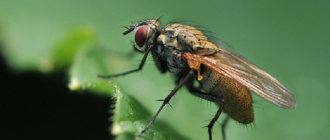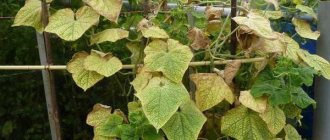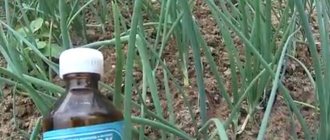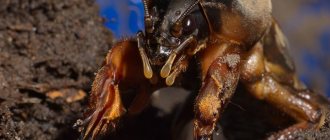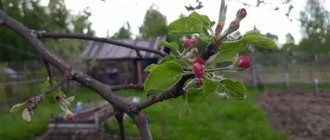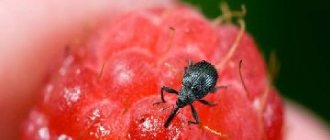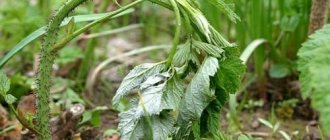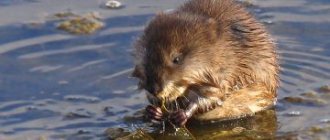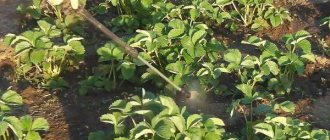Home / Pests and diseases
Back
Published: 04/23/2020
Reading time: 4 min
2
Plants of the cruciferous family are loved by many insects. The cabbage butterfly, the white butterfly, is no exception. It is distributed throughout the European part of Russia, Ukraine and other countries with a temperate climate. It is difficult to destroy cabbage caterpillars and butterflies, so it is better to ensure timely prevention.
- 1 Description
- 2 What it looks like at different stages of development
- 3 What is the danger
- 4 Control methods 4.1 Drugs
- 4.2 Folk remedies
Description
The photo fully reflects what cabbage whites look like. The insect is noticeable, large, its wingspan reaches 6 cm. The color is white, there are characteristic dark dots on the body that make the butterfly easily recognizable. A crescent-shaped spot is noticeable on the front wings. There is a certain feature - the insect is characterized by dimorphism: female whites are often larger than males.
The insect's flight begins in the spring; it is accustomed to a diurnal lifestyle. The greatest activity is observed in the hot summer. The cabbage plant does not tolerate windy weather and rain. Favorable temperature for reproduction is 22-25 degrees.
The process begins in July-August. The female lays eggs on plants, distributing them in small groups in different places. Fecundity is high, reaching 300 eggs in one approach.
Attention! The juice secreted by the larvae is poisonous. By eating them, small birds risk death. When collecting pests, a person must wear gloves, otherwise the skin may develop irritation, rashes and itching.
Where does the cabbage butterfly live?
Photo: Cabbage white butterfly
This species of Lepidoptera is distributed throughout Europe, including the islands of the Mediterranean Sea and the subarctic regions of Scandinavia. Cabbage white is also found in Morocco, Algeria, Tunisia, Libya and throughout temperate Asia up to the Himalayan mountains. It does not occur naturally outside of these regions, but was accidentally introduced to Chile.
The appearance of cabbage grass has already been recorded in some regions of South Africa. Great concern was also caused by the fact that these arthropods were discovered in 1995 in Australia, and in 2010 in New Zealand. This pest of vegetable crops has been found several times in the northeastern United States. It is unclear how the butterfly got there; perhaps it arrived illegally with cargo.
The butterfly is well adapted to migration; it has no difficulty in replenishing the population on the islands, as happens in England, where the cabbage fly flies from the mainland. They are often found on agricultural lands, parklands, vegetable gardens and farms, and love open spaces. They can land on fences and tree trunks, but always where there are sources of food nearby for the future generation. In the mountains it rises to a height of 2 thousand m.
On sunny days, adult individuals fly from flower to flower, feeding on nectar, and in cloudy weather they sit on the grass or low bushes, with their wings half-open. So they warm up, part of the sun's rays, reflected from the wings, falls on the body.
What it looks like at different stages of development
The eggs of the butterfly are pin-shaped, light yellow in color, and quite large - reaching 1.2 mm in length. After about 1-2 weeks, gray-green caterpillars emerge from them, with dark spots and stripes. The size depends on weather conditions and is 3.5 cm.
The larvae do not move at first. They attach to the underside of the leaf blade and feed on its pulp. After a few days, the caterpillars crawl across the cabbage and destroy its leaves, leaving deep furrows. Young insects eat the outside, while mature ones eat the inside.
The larval stage lasts 2-4 weeks. After this, the caterpillar can attach itself with a belt of threads to stones and trees, where it becomes a pupa. It has an angular shape and a bright yellow-green color. Black dots appear on the sides of the body and on the back. Pupae are often found on fences and trees, on the walls of buildings. In this phase they rarely remain on the leaves.
The pupal stage lasts about 2 weeks. If at this moment there is a cold snap or the weather is rainy, most likely the insect will complete its cycle after wintering.
The second generation appears if the first remains viable. This cycle of cabbage development is repeated annually. In the southern regions, 5 generations appear over the summer, in the middle zone - up to three.
Attention! Complete or incomplete transformation of pests is possible. In the second case (hemimetamorphosis), only 3 stages of development pass through: eggs, larvae, imago. This is not typical for cabbage. Whitefish undergo a complete transformation—holometamorphosis, which includes 4 stages: eggs, larvae, pupae, and imago.
Appearance and features
Photo: Cabbage butterfly insect
The cabbage has white wings with black corners on the front. Females have a pair of black spots on their front wings, they are brighter, and there is also a black teardrop-shaped stripe along the lower edge of the front wings. Along the anterior edge of the first wing, some scales are black; it looks like a smoky stripe. So the black tips, closer to the very corner of the wing, become lighter. In the center of the upper edge of the lower wing there is a black mark, which is not visible when the insect is sitting, since it is covered by the front ones.
The underside of the wings of females is pale greenish with dark pollen and there are spots on the forewings. Males have a more buffy underside. When the wings are folded, it serves as good camouflage. In this position, the hind wings almost cover the front ones. Their span is 5-6.5 cm. The antennae are black and white at the top. The head, chest and abdomen are black, with white hairs, and whitish below.
What is the danger
Light-colored butterflies flying over cabbage are attracted not only to cruciferous plants. They are dangerous for the following garden crops:
- beets and rutabaga;
- radish;
- rape;
- horseradish;
- mignonette;
- nasturtium;
- mustard.
The whitefish does not disdain even plants that produce a lot of essential oils. Caterpillars can often be seen on garlic and onions.
Interesting! The butterfly received the name “cabbage plant” after active cultivation of various varieties of cruciferous vegetables began. Before this, the insect fed on radish and field mustard, and the genus was not so numerous.
Natural enemies of the cabbage butterfly
Photo: White cabbage
About 80 percent of the larvae are killed by the Apanteles glomeratus, which injects its eggs into them. This happens while the caterpillars are still small. The predator's larvae hatch inside the host's body and slowly devour it, but the cabbage weed continues to live and consume food. When the wasp larvae grow, they eat the host's vital organs, killing her and burrowing through her skin.
Sometimes you can see the dry remains of a caterpillar shell on a cabbage leaf, surrounded by a cluster of up to 80 tiny yellow fluffy cocoons. The following spring, the riders emerge from their cocoons and fly in search of new cabbage white caterpillars. Having found a potential victim, the female ichneumon ichneumon probes it with her antennae to assess its size.
The size of the larva must be such that the offspring that will develop inside have enough food. An individual that is too old can turn into a pupa before the larvae of the parasitic insect develop there. The riders pierce the victim with their ovipositor and release one egg. The female can make several such injections into one caterpillar.
Many pupae, when they have just formed and their covers are still soft, are attacked by the parasitoid wasp Pteromalus puparum. She lays her eggs there. Up to 200 predatory individuals can develop in one pupa. In three weeks, the larvae develop into the cabbage pupa. If this happens in the summer, then the insects come out of it as adult insects; in the autumn, they remain to winter inside.
The cabbage white does not have a specific group of predators. They are preyed upon by a wide range of different birds. They are eaten by some mammals, rarely by reptiles, and by one insectivorous plant.
They are potential food for some:
- Hymenoptera;
- Hemiptera;
- Coleoptera;
- Diptera;
- arachnids.
Fighting methods
If insect eggs are found on cabbage, measures should be taken immediately to ensure their destruction. The first thing the gardener must do is to carefully examine the plantings, find all the masonry, collect them and destroy them. This method is applicable and justified in compact summer cottages.
In large areas, chemicals will help save the crop. They can be used at the initial stage of the growing season. If processed late, there is a possibility of “poisoning” the vegetable; its consumption will be dangerous for humans. It is possible to save the plantings in this case, but the struggle will be long, because you will have to use safe methods with reduced effectiveness.
Drugs
The fight against white grass will be successful if the gardener uses modern means of protection - insecticides. Chemical and biological substances can be used. The advantage of the former is high efficiency. But there is a significant drawback - when cruciferous vegetables are processed at the head formation stage, they penetrate into the tissues of the plant and make it unsuitable for consumption.
Biological preparations are used at all stages of cultivation. The following remedies are effective:
- "Fitoverm";
- "Lepitotsid";
- "Akarin";
- "Gapsin";
- "Vertimek".
If the formation of cabbage forks has not yet begun, it is permissible to use chemicals. The following are recognized as the best in the fight against whiteweed:
- "Confidor";
- "Kinmiks";
- "Commander";
- "Aktellik";
- "Karbofos";
- "Bi-58".
The drugs must be diluted according to the standards indicated on the packaging. Exceeding the recommended proportions is dangerous for the plant, and reducing it will lead to ineffectiveness. The need for re-treatment (after 10-14 days), as recommended by the instructions, should not be ignored; it is needed to consolidate the result.
Attention! Chemicals are dangerous not only for the white butterfly, but also for humans. The gardener must take care of his health and take measures to prevent the substance from getting into the eyes, mucous membranes and skin.
Folk remedies
If the contamination is insignificant and the planting volume is small, you can do without the use of insecticidal preparations. Popular folk remedies are safe and economical, but are noticeably inferior in effectiveness to chemistry.
Tobacco dust (ash) will help remove cabbage from the beds; just sprinkle it on the leaf blades. They are also sprayed with saline and mustard solutions. To prepare 10 liters of the working mixture, use 100 g of the bulk component. The product is infused and filtered, and spraying is carried out in the evening or morning.
Cabbage whites disappear after treating the plantings with ammonia. To prepare the solution, pour a bottle (50 ml) of 3% ammonia into 10 liters of clean water. This mixture is prepared immediately before use, because the active substance evaporates quickly. The composition cannot be stored. The product also helps get rid of other garden pests.
Folk recipes for destroying cabbage whites
Night spray solutions
1). Take 3 liters of water and dissolve valerian alcohol tincture in it, 1 bottle. Sometimes salt is added, 2 tablespoons.
2). Dissolve 0.5 kg of ash in a bucket of water. After 30 min. add liquid soap (2 tablespoons).
Trap
Sweet syrup or jam is poured into a container (plate, cut-off plastic bottle) and “Brewer’s yeast” tablets are placed. Don’t forget to remove the insects that have accumulated there.
Decoctions and infusions for spraying
1). Pour pine or spruce needles, cones (0.2 kg) with boiling water (2 l). The infusion is left for a week, then filtered and stored in the refrigerator. This infusion is enough for a 10-liter bucket of water.
2). Add mustard powder (100 g per bucket) to hot water and leave for 2 days. Dilute 1 to 1.
3). Fresh potato tops (1 kg) are infused in a bucket of water for 4 hours. After straining, soap, 50 g, is added.
4). Fill a bucket one-third full with chopped burdocks and add water. The herb is infused for 3 days.
5). Dry and cut wormwood (1 kg). Boil for 15 minutes, add water. The cooled broth is diluted with a bucket of water.
6). Garlic broth from 0.4 kg of unpeeled cloves. You will need 5 liters of water. Boil for 2 hours. Dilute 1 to 1.
7). Dried chamomile (1 kg) is infused for 12 hours in a 10-liter bucket of water. After filtering, dilute with two buckets of water and add soap, 100 g.
8). Ammonia (50 ml) is poured into a bucket of water and used without infusion.
It is useful to sprinkle the leaves with tobacco dust or baking soda.
Prevention
Recommendations to prevent the destruction of crops by whiteweed:
- After the start of insect flight, the area is regularly inspected for the presence of wild cruciferous crops. They must be removed because they attract pests;
- in order to disorient insects, mulch the beds with repellent herbs (plants with a specific odor are used);
- Spray the plants with a solution of birch tar. The procedure is repeated at intervals of 2 weeks;
- The underside of the sheet is periodically inspected in order to identify the masonry in time.
If you follow the recommended sequence of treatments and regularly inspect the plantings, the likelihood of damage to cruciferous plants is reduced to zero. Ignoring the problem is dangerous because caterpillars reproduce quickly.
Preventive measures
Prevention against white grass will help prevent the mass infestation of a garden plot by this pest.
Actions to prevent cabbage proliferation:
- Burning plant residues at the end of the summer season.
- During the period of the first frost, the beds are dug up.
- Cruciferous crops are planted in a row to make it easier to inspect the plants.
- It is advisable to carry out planting before the flight of the white butterfly.
- Crops that are attacked by cabbage grass are placed quite far from each other.
- Complete removal of weeds.
- Tree trunks should be whitened to prevent pupae from appearing on them.
- Change the planting location for the next summer season.
Cabbage whites can cause a lot of harm. But if you take timely preventive and protective measures, it is quite possible to cope with it and prevent an invasion of your garden plot, preserving the harvest.
The cabbage butterfly is a lepidopteran insect from the white butterfly family. Its second name, cabbage white, is associated with the name of the family and genus. This species, Pieris brassicae, was described by Linnaeus in 1758 and belongs to the club-whiskers.
